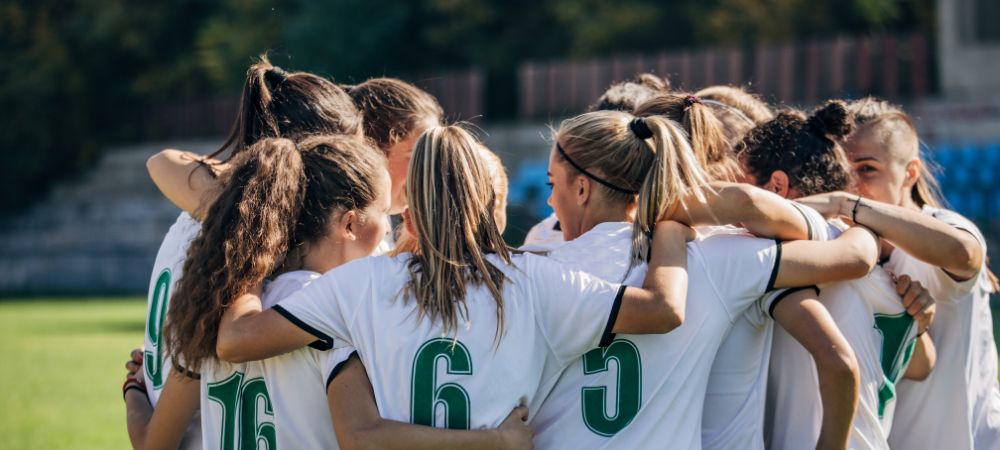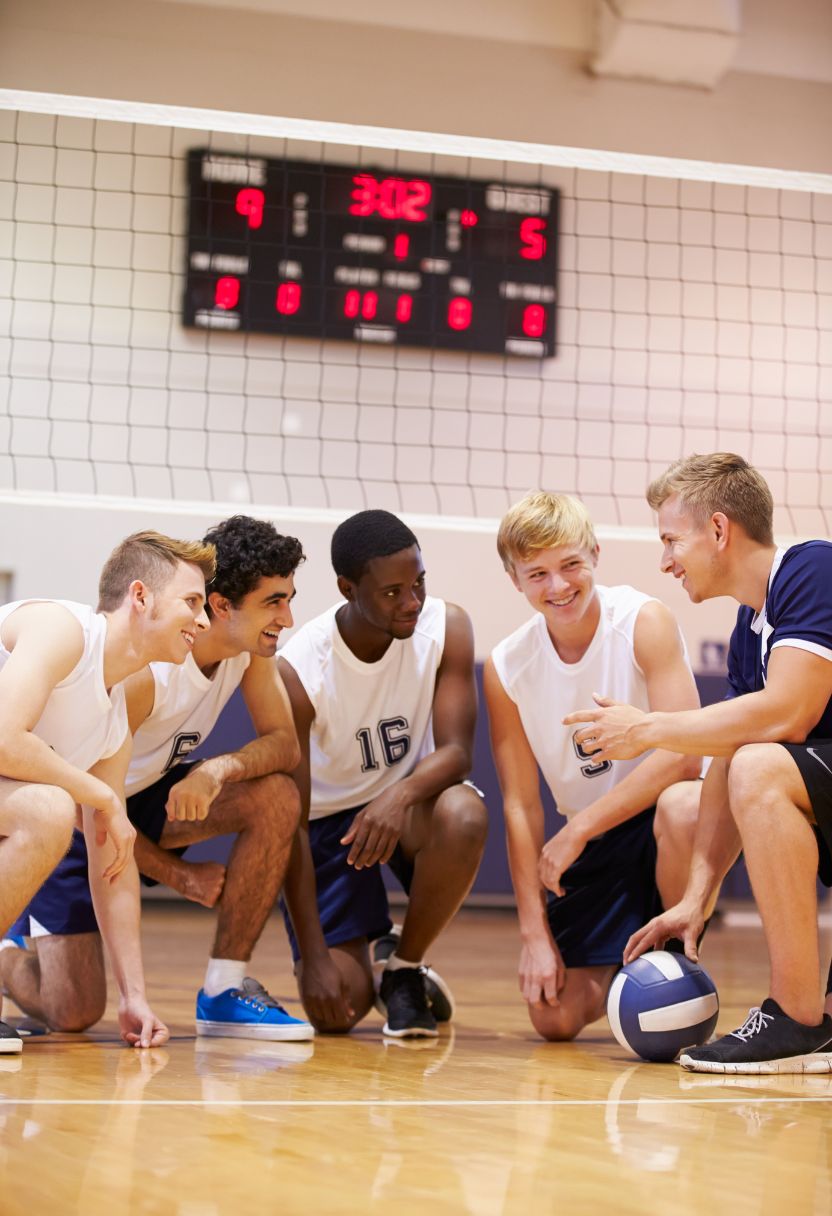

Communication in team sports, oh boy, it's a big deal! You can't underestimate the importance of it. Imagine playing soccer and nobody's talking to each other - it'd be chaos. No one would know where to pass the ball or when to defend. It'd be like herding cats!
First off, let's talk about strategies. When you're on a team, you've got plans and tactics that everyone needs to know. Gain access to more details see listed here. If you ain't communicating these clearly on the field, you're setting yourself up for failure. It's not just about shouting "pass me the ball!" It's also about those subtle signals and nods that tell your teammate what's going on.
Then there's motivation. Ever been in a game where everything seems to go south? A little pep talk can change everything! Just imagine your teammate saying, "We've got this!" instead of staying silent or worse, criticizing you. Positive communication boosts morale and keeps everyone's head in the game.
check .
But wait, there's more! Let's not forget problem-solving during playtime. Things don't always go as planned (oh surprise!). Maybe an opponent is tougher than expected or someone gets injured. Quick decisions have to be made right there on the spot – without good communication? Forget it!
And hey, it's not all about talking either! Listening plays a huge role too (surprise again!). If no one's paying attention when instructions are given or if feedback is ignored… well that's another recipe for disaster right there.
Heck, even after games – win or lose – communication helps teams analyze performance together: What worked? What didn't? How can we improve next time? This collective reflection strengthens bonds among teammates and sets clear goals moving forward.
In conclusion folks (drumroll please!), effective communication isn't just important; it's essential in team sports from start to finish line! So next time you're out there on any field remember: Speak up but also listen carefully because teamwork makes dream work - ain't that true?
Oops almost forgot.. Communication doesn't come naturally for everyone but with practice anyone can get better at it.. And practice makes perfect right?!
Communication in team sports ain't just about talking. It's a mix of verbal, non-verbal, and even some unspoken cues that help teams work together like a well-oiled machine. Let's face it, without solid communication, no team's gonna make it very far.
First off, let's chat about verbal communication. This one's the most obvious – you got players yelling out plays or calling for the ball. Coaches shouting instructions from the sidelines also fall into this category. But it's not just about being loud; clarity is crucial. If your teammates can't understand what you're saying, then what's the point? And hey, it's not all serious either. Sometimes a joke or two helps lighten the mood and keeps everyone engaged.
Now, non-verbal communication might seem less important at first glance but don't be fooled! Body language speaks volumes on the field or court. A simple nod can signal agreement while eye contact can be used to confirm understanding among teammates. Hand signals are another biggie – especially in sports like baseball where catchers use them to tell pitchers what pitch to throw next.
There's also something called tacit knowledge which is kind of an unspoken understanding between team members developed over time through practice and experience playing together. You know how sometimes players just seem to "know" where their teammate will be without looking? That's tacit knowledge at work! It's almost like they're reading each other's minds – pretty cool stuff if you ask me.
But wait - there's more! Listening skills are often overlooked when we talk about communication but they're super important too (and no one likes being ignored). Good listeners pick up on subtle cues and respond appropriately which helps keep things running smoothly during games.
And let's not forget emotional intelligence – recognizing emotions in oneself and others plays a huge role in effective teamwork as well since it helps manage stress levels under pressure situations better than anything else could ever do alone by itself anyways!
So there ya have it: different types of communication all rolled into one big happy family working together towards victory every single time they step onto whatever playing surface happens each day depending upon schedule obviously...
The Olympic Gamings, restored in 1896, are one of the world's oldest showing off occasions, initially held in old Greece from 776 BC.
Basketball was invented in 1891 by Dr. James Naismith, who sought a risk-free indoor sport to keep athletes fit throughout the winter season.
The Super Bowl, the championship game of the NFL, is recognized for its extravagant halftime programs and high-profile commercials, ending up being a significant occasion in American society beyond sporting activities.
The highest ever recorded rate for a tennis offer is 263.4 km/h (163.7 mph) by Australian gamer Sam Groth in 2012.
In the world of team sports, the role of a captain is multifaceted and demanding.. One of the most crucial aspects?

Posted by on 2024-07-08
Team sports have been often hailed as a great tool for improving mental health.. Well, they can be, but let's not pretend there aren't challenges and considerations to keep in mind.

Posted by on 2024-07-08
**Adapting Communication Styles for Diverse Teams**
In team sports, communication ain't just important—it's crucial.. You'd think that just passing the ball or shouting instructions would be enough, but oh no, it's way more than that.

Posted by on 2024-07-08
In the fast-paced world of sports, teams don’t always have the luxury of time to sit back and analyze every move they've made.. Often, it's critical to monitor progress and make adjustments based on feedback instantly.

Posted by on 2024-07-08
Communication is a fundamental aspect of human interaction, and it can be divided into two main types: verbal and non-verbal communication. While both forms are crucial for conveying messages and understanding each other, they differ significantly in their methods and impact.
Verbal communication involves the use of words, whether spoken or written, to express ideas, thoughts, and feelings. It's the most direct form of communication, allowing individuals to convey precise messages. For instance, when you're giving instructions or telling a story, verbal communication ensures that your message is clear and understood. However, it's not without its flaws. Sometimes words can be misunderstood or taken out of context. And let's face it – we don't always find the right words at the right time.
On the other hand-non-verbal communication encompasses all forms of expression that aren't dependent on words. This includes facial expressions, body language, gestures, eye contact, tone of voice (even though it's part of speaking), and even silence. A smile can show friendliness; crossed arms might indicate defensiveness; maintaining eye contact often signifies confidence or interest.
Interestingly enough-non-verbal cues sometimes speak louder than words themselves! Imagine someone saying "I'm fine" but avoiding eye contact and having slumped shoulders. It's pretty obvious they're not actually fine despite what they said verbally.
One major advantage non-verbal communication has over verbal is its ability to transcend language barriers. A thumbs up means approval in many cultures; a frown almost universally signals displeasure or sadness without needing any translation whatsoever.
However-not everything about non-verbal communications is perfect either! Misinterpretations happen more frequently because different cultures have different meanings attached to certain gestures or expressions which could lead to misunderstandings if one isn't aware.
Combining both forms effectively usually results in better overall communications skill set because they complement each other well by addressing gaps left by one another alone wouldn't fill easily-for example using hand gestures while explaining something complex helps audience grasp concepts quicker alongside auditory explanations given through speech itself!
In conclusion-it's essential we understand balance importance between these modes so neither becomes neglected nor overly relied upon exclusively since doing so limits our ability connect fully diverse range people whose backgrounds may vary greatly from ours thereby reducing effectiveness potential interactions significantly less productive than otherwise would've been possible had proper mix utilized instead!


Coaches play a pretty significant role in facilitating effective communication, and it's not just about barking orders from the sidelines. They have to create an environment where everyone feels heard and valued, which ain't always easy. Communication, after all, isn't just about talking; it's also about listening-something we often overlook.
First off, coaches need to be good listeners themselves. If they don't hear what their players are saying or not saying, then they're missing out on crucial information. Sometimes athletes won't outright say they're tired or stressed; they'll show it in other ways. A coach who's attuned to these subtleties can pick up on cues that others might miss.
But let's face it: Not every coach is born with great communication skills. Some have to work at it really hard. It's essential for them to be open and honest with their team members. When coaches admit their own mistakes or uncertainties, it creates a culture of transparency that encourages athletes to do the same. Ain't nobody perfect, right?
Moreover, coaches should foster a space where feedback goes both ways. Athletes should feel comfortable giving input without fearing backlash or resentment. This kind of two-way street builds trust and respect within the team dynamics. After all, if you can't speak your mind during practice sessions, how can you expect to perform under pressure during games?
Now, let's not forget non-verbal communication! Body language speaks volumes-it sure does! Coaches need to be aware of what they're conveying through their gestures and expressions because sometimes actions really do speak louder than words.
Oh! And one more thing-coaches shouldn't underestimate the power of encouragement and positive reinforcement. A few well-placed "Good job!"s can go a long way in boosting morale and confidence.
In conclusion (yep, we're wrapping this up), effective communication is pivotal in sports and life alike. Coaches who prioritize listening as much as speaking-and who value openness over perfection-are better equipped to lead successful teams. So yeah, while coaching involves strategy and skill training too, its heart lies in understanding people-and that's something no playbook can teach you completely.
And there ya have it-a somewhat messy yet genuine take on how coaches contribute immensely towards fostering effective communication!
The Impact of Good Communication on Team Performance
You ever wonder why some teams just click while others seem to be constantly at odds? Well, it's often down to the way they communicate. Good communication can do wonders for team performance, and that's not a secret. It's something we all kinda know but don't always put into practice.
First off, let's talk about clarity. When team members communicate well, there's less room for misunderstanding. Misunderstandings can lead to mistakes, delays, and sometimes even conflicts that could've been avoided in the first place. With clear communication, everyone knows what's expected of them and when something needs to be done by. Ain't that nice?
But it's not just about avoiding problems; good communication actually fosters collaboration. When people feel comfortable sharing their ideas without worrying they'll be shot down or misunderstood, they're more likely to contribute meaningfully. This creates a sense of belonging and shared purpose within the team which is super important for morale.
You might think listening isn't as crucial as talking when it comes to communication, but oh boy you'd be wrong there! Active listening-actually paying attention and showing you understand what's being said-is a huge part of effective communication. It shows respect and builds trust among team members. And trust me, trust is one thing you can't fake.
Now let's address feedback, both giving it and receiving it. Constructive criticism helps people improve but only if it's delivered well. Nobody likes feeling attacked or belittled; hence how you say things matters almost as much as what you're saying. Likewise, being open to receiving feedback without getting defensive makes for a healthier work environment where continuous improvement is possible.
Don't forget the role technology plays too! In today's world with remote work becoming more common, tools like Slack or Zoom are indispensable for keeping everyone in sync. But beware-the convenience these tools offer should never replace real human interaction entirely.
However-and this is a big however-all this doesn't mean good communication will solve all your problems overnight or make everything perfect instantly (or ever). Teams are made up of individuals with different personalities and backgrounds so hiccups are inevitable now and then.
So yeah, improving communication within your team won't magically make every issue disappear but it'll certainly set you on a path toward better performance overall-and who wouldn't want that?

Challenges to Effective Communication in Team Settings
Effective communication within a team setting is often touted as the cornerstone of success. However, there are numerous challenges that can hinder this ideal. It ain't always easy to get everyone on the same page, and sometimes it feels like an uphill battle.
First off, let's talk about misunderstandings. They're inevitable! When multiple people with different backgrounds and perspectives come together, miscommunication is bound to happen. Someone might say something they think is clear as day, but others just don't get it. It's not that they're being difficult; it's just how humans are.
Then there's the issue of language barriers. Not everyone speaks the same way or uses the same phrases. Even among native speakers of a language, regional dialects and colloquialisms can create confusion. When you throw in non-native speakers, well, things can get really complicated real quick.
Another biggie is technology. Sure, we've got emails, instant messaging apps, video calls-these tools should make communication easier, right? Well, not exactly. Sometimes these tools do more harm than good. Emails can be misinterpreted because they lack tone and facial expressions. Video calls suffer from technical glitches or poor internet connections which disrupt flow of conversation.
And let's not forget about personal dynamics within the team itself. People have different personalities; some are naturally more dominant while others might be quieter or more reserved. This imbalance can cause friction because those who speak up may unintentionally overshadow those who don't.
Also worth mentioning is trust-or lack thereof-in teams where members don't know each other well yet or have had past conflicts that haven't been fully resolved yet.. Trust issues lead to guarded communication where people hold back their true thoughts for fear of judgment or backlash.
Oh! And time constraints! In fast-paced work environments where deadlines loom large over every task at hand., effective communication takes a backseat so tasks can be completed quickly...even if it means sacrificing clarity along way..
Lastly,, there's plain old human error.. We make mistakes… We forget things… We misspeak… It happens!
In conclusion: effective team communication isn't impossible but requires conscious effort from all involved parties.. It demands patience understanding flexibility willingness adapt methods overcome inherent challenges stand front us...
Sure, here's a short essay on "Strategies for Improving Communication Among Team Members":
---
Communication is undeniably the backbone of any successful team. Without effective communication, even the best-laid plans can fall apart. So, what strategies can we use to improve communication among team members? Surprisingly, it's not rocket science!
First off, let's talk about open channels of communication. It's crucial that everyone feels comfortable sharing their ideas and feedback without fear of being judged. If people don't feel like they can speak up, how are you supposed to know what's going wrong or right? Encouraging an open-door policy where team members can express their thoughts freely will make a world of difference.
Next up is active listening. You'd be surprised how often we hear but don't actually listen. Active listening means paying attention not just to the words being said but also to the emotions and intentions behind them. Nod your head, make eye contact-do whatever it takes to show that you're really engaged in what they're saying.
By the way, another important strategy is regular check-ins. Don't underestimate the power of a quick daily huddle or weekly meeting! This keeps everyone on the same page and ensures that issues are addressed promptly rather than festering into bigger problems later on.
Additionally, using collaborative tools can't be overlooked. Platforms like Slack or Microsoft Teams allow for instant messaging and file sharing which makes collaboration seamless-even when folks aren't physically together. But hey, don't get too dependent on these tools; face-to-face (or video) conversations still hold value for more nuanced discussions.
Also-and this might sound trivial-let's not forget about clarity in communication! How many times have you received an email that's so ambiguous you had no idea what was being asked of you? Be clear and concise in your messages to avoid misunderstandings.
Now, let's touch upon something that's often ignored: emotional intelligence. Being aware of your own emotions and those of others helps in responding appropriately during interactions. Empathy goes a long way in building trust and rapport among team members.
But wait-don't think for a second that conflicts won't arise just because you've got all these strategies in place! Conflicts are inevitable but managing them constructively is key. Encourage resolving differences through dialogue rather than letting grudges build up.
Finally, don't forget to celebrate successes together! Acknowledging achievements boosts morale and reinforces positive behavior within the team.
In conclusion, improving communication among team members isn't about having one perfect strategy but rather a combination of several practices that promote openness, clarity, empathy, and regular interaction. Implementing these strategies won't just enhance productivity-it'll foster a healthier work environment too!
---